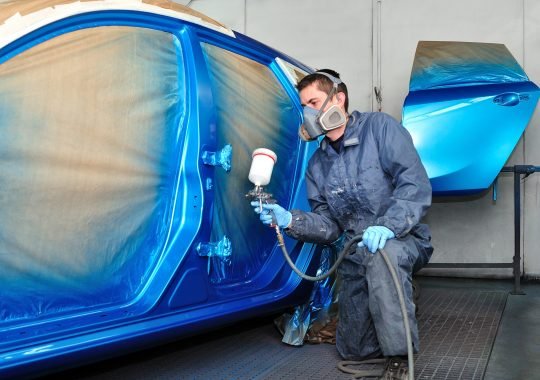TSI engines are gasoline engines with double turbocharging (which also contain mechanical compressors), a system of direct “layer-by-layer” fuel injection. The structure is much more complicated than a conventional turbocharged engine, however, it is worth noting that reliability, power and economy are at a very high level. It is practically devoid of flaws.
With relatively small displacement, the TSI engine delivers the same or even more power compared to larger gasoline atmospheric engines. For example, a 1.2-litre TSI with one turbine has a power indicator at around 105 hp, which is quite comparable with a 1.6-litre atmospheric counterpart. At the same time, maximum torque is available at low speeds, which provides better acceleration dynamics. Also worth noting is a fairly wide shelf of torque. 1.4 TSI deservedly has the greatest popularity in the entire line of engines. This engine has received many awards and has been recognized as the best engine of the year for 7 consecutive years.
The development of the motor and the first TSI engines appeared in the very late 90s, although 2005-2006 can be considered the beginning of mass popularization. TSI is the brainchild of Audi, and the acronym itself belongs to the Volkswagen
Types of TSI Engines
TSI units up to 140 hp they have only one turbine, while power plants from 150 horses already receive a turbine and a compressor. In other words, TSI is a complete line of WAG turbo engines. TSI engines have different power and displacement. The TSI lineup includes 1.2 (105 hp), 1.4 (122 hp), 1.8 (140 hp), 2.0 (180 hp) and 3.0 (200 hp) liter units. It is also worth noting that the power on individual working volumes can be even higher since additionally there are forced and deformed modifications.
As already mentioned above, the engines of this line can have both a turbine and a bunch of turbines and a compressor. Engines with a displacement of 1.4 litres have a turbocharger and a mechanical supercharger. For example, such a TSI with a power of 150 hp You can superficially consider the principle of joint work of two superchargers. If the motor is operating under light load conditions, i.e. the crankshaft speed is low or medium, then the turbine and compressor operate in parallel.
Raising the revolutions to 2500 rpm and above allows the intense flow of exhaust gases to interact most effectively with the turbine. The mechanical supercharger is switched off. The control system activates the compressor only during sharp accelerations. This compensates for the inertia of the turbine and minimizes the effect of the turbo hole.
In other words, the compressor works when the turbine does not have enough exhaust gas energy for a reliable pickup. This scheme allows you to get rid of the failures that are characteristic of turbo engines with one turbine in the entire speed range. In parallel, it is worth noting the high efficiency and efficiency of TSI motors.
What is the result
To begin with, we note that productive and reliable TSI motors are quite in demand not only among ordinary consumers but also among tuners. Forcing and tuning the TSI engine allows without significant alterations to increase the power of such an engine. After chip tuning, you can count on an additional 7-15 hp. With deep tuning, which involves replacing the turbine, compressor, nozzles and other elements with more productive ones, it is possible to add from 100 or more horsepower.
At Flash Cash For Cars we are the expert car buyers and willing operate the service of car for cash in Brisbane up to $8999 and same-day car removal from anywhere in Brisbane regions without any charges – no hidden fees and totally free. We pay cash for all type of Cars, Truck, Van, Ute, 4×4, SUV and much more in any condition. Damaged, accident cars are welcome as we consider all types of vehicles. Contact Flash Cash For Cars today and benefit from our services.





